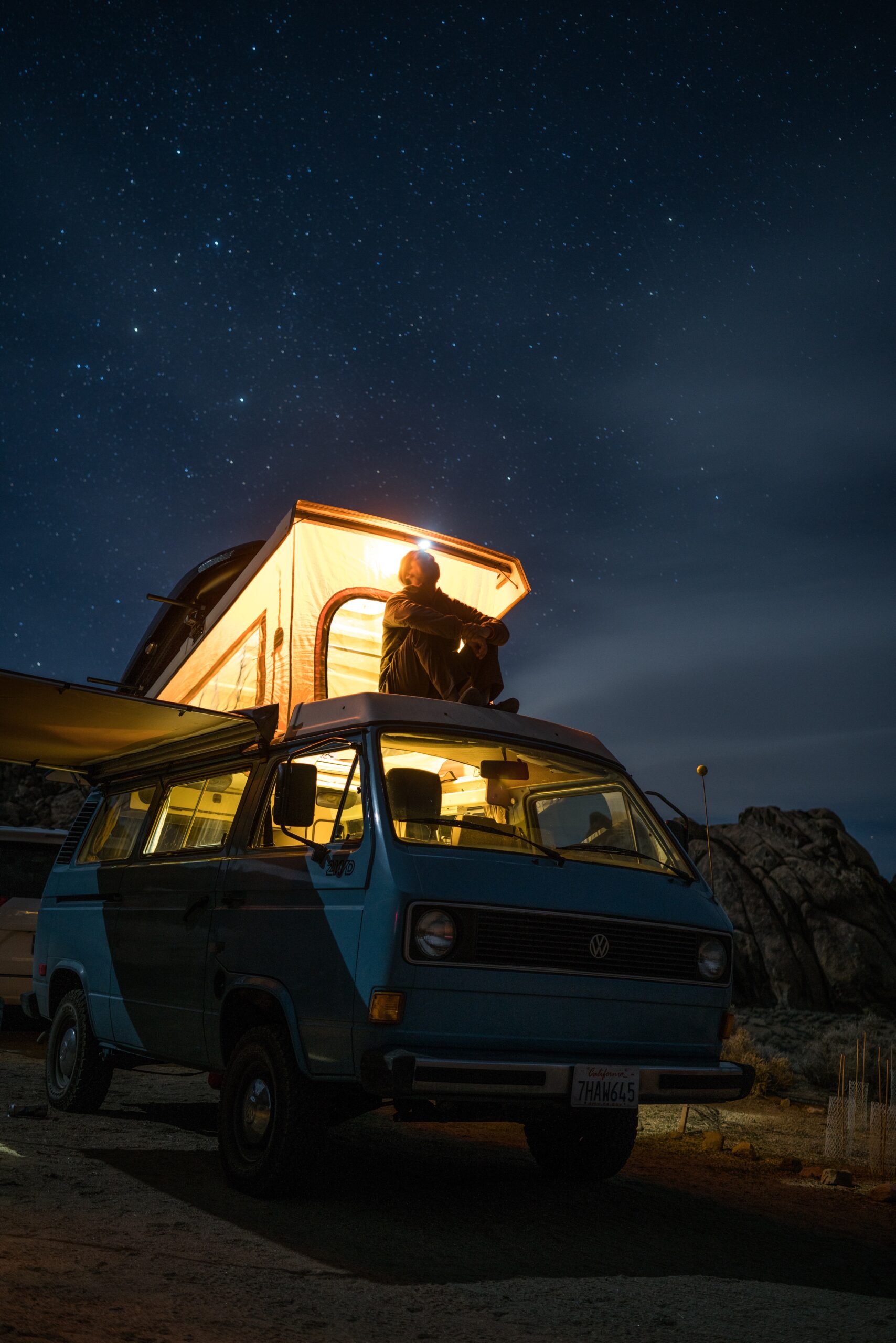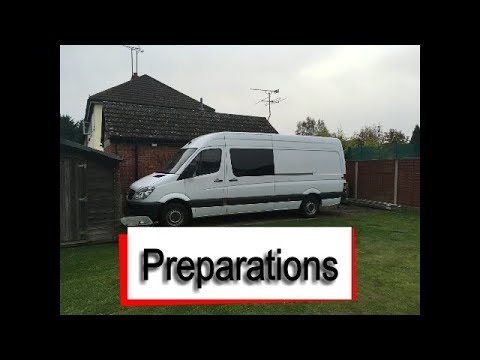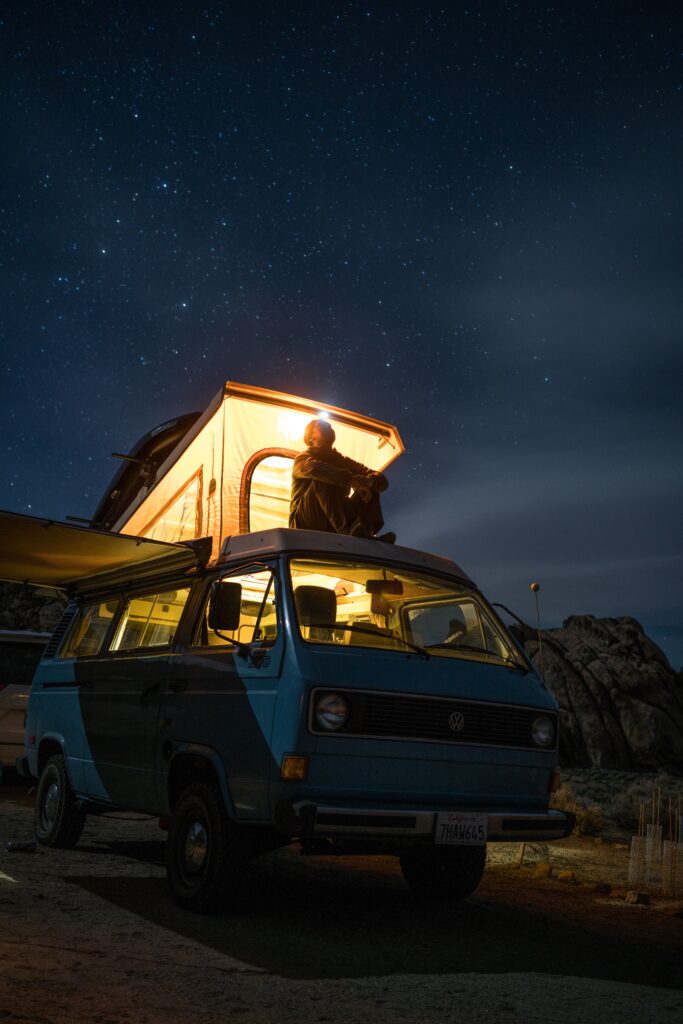
My name is Greg Virgoe and in this article, I will be discussing the preparations involved in converting a Mercedes Sprinter into a campervan. The focus of this article is on the self-build aspect of the conversion process.
One crucial step in the preparation phase is moving the Sprinter off the road and into the garden next to the workshop. This relocation will provide a safer and more convenient working environment, allowing easy access to tools within reach. To enhance the work area, scaffold boards purchased for £10 each will be repurposed into future garden furniture projects. This article will provide detailed insights into the self-build campervan series, covering all aspects of the conversion process. Thank you for reading and stay tuned for more information from Greg Virgoe.
Mercedes Sprinter Camper Conversion – Self-Build Campervan Preparations

Moving the sprinter to a safer working location
When embarking on a camper conversion project, one of the first steps is to find a safe and suitable location to work on the vehicle. In my case, I decided to move the Mercedes Sprinter to the garden next to my workshop. This decision was driven by the need for a safer working environment, as well as the ease of access to necessary tools and equipment.
Reasons for moving the sprinter to the garden next to the workshop
One of the primary reasons for moving the Sprinter to the garden next to the workshop was safety concerns. Working on a busy road can be risky, with passing vehicles posing a potential hazard. By relocating the van to the garden, I minimized the risks associated with working in such a high-traffic area.
Another benefit of the new location was the reduction of distractions and interruptions. Working on a busy road often meant dealing with the noise and commotion of passing vehicles, which could disrupt focus and workflow. In the garden, I was able to create a more peaceful and conducive working environment, allowing me to concentrate fully on the task at hand.
Additionally, moving the van next to the workshop provided me with easy access to all the necessary tools and equipment. Previously, I would have to transport tools back and forth between the road and the workshop, which was not only time-consuming but also increased the risk of damaging or losing essential items. With the van now in close proximity to the workshop, I could conveniently retrieve any tools or equipment I needed, enhancing efficiency and productivity.
Benefits of working in a safer environment
Working in a safer environment offers several advantages when it comes to undertaking a self-build camper conversion project. Firstly, by minimizing the risks of accidents and injuries, I could focus more on the quality and precision of the work. Safety should always be a top priority, and by working in the garden next to the workshop, I greatly reduced the chances of mishaps that could potentially derail the project or cause harm.
Creating a focused and productive workspace was another significant benefit of the safer environment. Without the constant distractions and interruptions of a busy road, I could immerse myself fully in the task at hand. This level of concentration allowed for better attention to detail, resulting in a higher-quality end product.
Furthermore, the longevity of the project was ensured by working in a safer environment. By minimizing the risks of accidents or damage caused by external factors, I could be confident in the durability and longevity of the campervan conversion. This gave me peace of mind, knowing that the effort and resources invested would yield a lasting and reliable final product.
Preparing the garden for the van placement
Before bringing the van into the garden next to the workshop, some preparations had to be made to ensure a smooth and efficient process. These preparations involved clearing the path for the van’s entry, creating a stable and level base for the van, and taking necessary precautions to protect the surrounding areas.
Clearing the path for the van’s entry into the garden was the first step in preparing the garden. The path needed to be free from any obstacles, such as plants or debris, that could impede the van’s movement. Clearing the path also included trimming overhanging branches or low-hanging structures that might pose a risk during the entry process. By ensuring a clear and obstacle-free path, I minimized the chances of any potential damage to the van or the surrounding areas.
Creating a stable and level base for the van was crucial in order to establish a solid foundation for the camper conversion project. This involved leveling the ground and removing any uneven or unstable surfaces. Additionally, I made sure to compact the soil properly to prevent any sinking or shifting of the van once it was in place. This attention to detail in preparing the base ensured a secure and stable platform for the further construction and modifications of the campervan.
Taking necessary precautions to protect the surroundings was also an essential part of preparing the garden. I took measures to protect the lawn and flowerbeds from potential damage caused by the weight or movement of the van. This included placing protective boards or barriers along the edges of the garden to prevent accidental tire tracks or damage from occurring. By being proactive in protecting the surroundings, I ensured that the garden remained intact and undisturbed throughout the camper conversion process.

Using scaffold boards for future garden furniture projects
As part of the preparations for the campervan build, I decided to utilize scaffold boards not only for the construction of the van but also for future garden furniture projects. This approach allowed me to repurpose materials, adding a sustainable touch to the conversion process.
Utilizing the scaffold boards purchased for the van build was a smart and efficient way to make the most of available resources. Since the boards were already on hand, it made sense to extend their use beyond the immediate needs of the camper conversion project. This not only saved money but also minimized waste and environmental impact.
By turning the scaffold boards into functional garden furniture, I could create a harmonious and coordinated outdoor space. The boards could be transformed into benches, tables, or even planters, adding a touch of creativity and practicality to the garden area. This repurposing of materials not only contributed to the aesthetics and functionality of the overall project but also showcased the versatility and resourcefulness of the camper conversion process.
Repurposing materials for sustainability is an increasingly important consideration in today’s world. Rather than discarding or wasting resources, finding alternative uses for materials helps reduce the negative impact on the environment. By repurposing scaffold boards for garden furniture, I was able to contribute to a more sustainable and eco-friendly camper conversion project.
Preparing the workshop for the build phase
The workshop plays a vital role in the successful completion of a self-build campervan project. Therefore, it was essential to prepare the workshop for the build phase, ensuring it was organized, stocked with necessary tools and materials, and created a comfortable and functional workspace.
Organizing the workshop for efficient work was a critical aspect of the preparations. An organized workshop facilitates a smooth workflow by providing easy access to tools, minimizing time spent searching for items, and reducing the chance of misplacing or losing essential tools and materials. I arranged the tools and supplies in a systematic manner, utilizing wall-mounted racks, labeled storage containers, and designated areas for specific items. This organization not only improved efficiency but also created a visually appealing and clutter-free workspace.
Stocking up on necessary tools and materials was another vital step in preparing the workshop for the build phase. I created a comprehensive list of all the required tools and materials, ensuring that I had everything I needed before starting the project. This list served as a guide when purchasing or gathering the necessary items, allowing me to effectively manage my budget and ensure the quality of the materials. By having all the tools and materials readily available, I could avoid delays and interruptions during the build phase, maximizing productivity and the overall progress of the project.
Creating a comfortable and functional workspace was crucial to maintain a positive and focused mindset throughout the camper conversion project. I made sure to establish ergonomically sound workstations, with proper lighting, ventilation, and comfortable seating. Additionally, I set up a dedicated area for planning and drafting, allowing for efficient decision-making and design iterations. By creating a workspace that catered to both physical and mental well-being, I could work for extended periods without sacrificing comfort or efficiency.

Conclusion
Moving the Mercedes Sprinter to a safer working location and preparing the workshop are crucial steps in the self-build campervan preparations. By creating a focused and productive environment, the project can progress smoothly, ensuring high-quality results. Repurposing materials, such as scaffold boards, adds a sustainable touch to the campervan conversion process, contributing to a more eco-friendly project. With thorough preparations in place, the self-build campervan series can continue with great attention to detail, resulting in a successful and satisfying end product.

